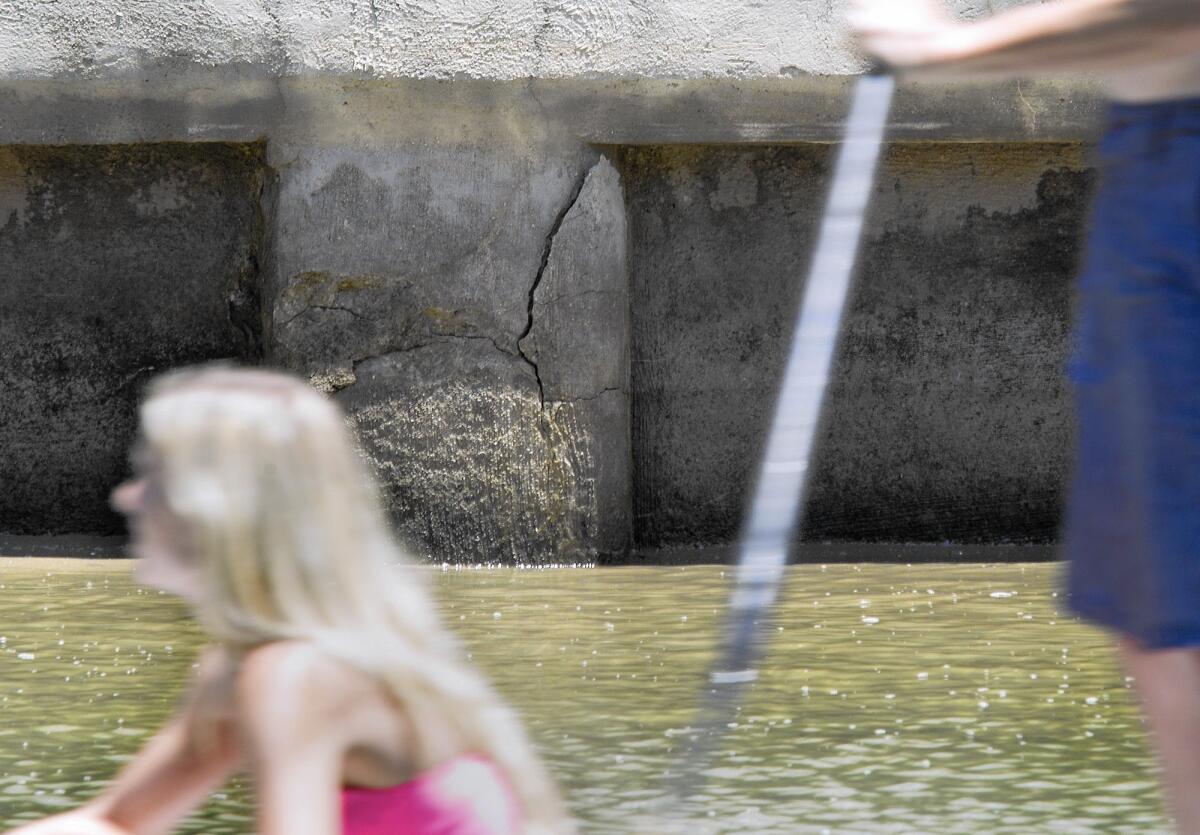Newport leaning toward repairing Balboa Island seawalls

The Newport Beach City Council indicated during a study session Tuesday that the aging seawalls along Balboa Island will be repaired but probably not replaced in the coming years.
Council members directed staff to move forward with a refurbishment plan for the roughly 2 miles of seawalls that surround Balboa Island and Little Balboa Island, the oldest of which were built about 90 years ago.
City staff came up with four options for the council to discuss Tuesday: replace all the sea walls at a cost of $68 million; rebuild the most vulnerable structures at a cost of $35 million; rebuild 640 feet of sea wall and retrofit the vulnerable areas at a cost of $17 million; or retrofit the seawalls that need the most repair at a cost of $14 million.
Mayor Ed Selich suggested combining portions of the staff’s lower-cost plans to moderately increase the height of most seawalls and retrofit the ones in most need of repairs. Councilman Marshall Duffield and Tony Petros spoke in favor of the mayor’s idea.
The repairs would be focused on areas like the Grand Canal and west end of the island, where the walls have wide cracks and are barely able to protect the residents from rising tides.
Selich suggested dredging the Grand Canal and using the sand to build up the mud line at the walls in an effort to stabilize the structures.
Selich also spoke in favor of placing caps on existing walls to strengthen them. The California State Coastal Conservancy adopted a climate-change policy in 2009 that said agencies should prepare for a 55-inch sea level rise by 2100.
“My concern with any plan is the timing,” said Balboa Island resident Don Abrams. “The timing is really now.”
The council’s discussion marks a major step in the years-long debate about how to handle rising sea levels and deteriorating infrastructure to keep waterfront property from flooding.
The City Council first set a goal in early 2010 to look into preparedness for rising sea levels. A study completed in 2011 indicated the walls had as little as 10 years of useful life left. Initial estimates priced full replacement of the seawalls at roughly $75 million.
Nearly every winter during especially high tides, city workers pump sea water back into the ocean after it has lapped over the walls.
Now, city officials are staring at the possibility of El Nino storms in the fall and winter, coupled with walls that already have trouble keeping water off the island, said Councilman Marshall Duffield.
“When I look at the seawall and the high tides, it’s clear that there’s a great need to get on this,” he said. “We’re going to have some problems.”